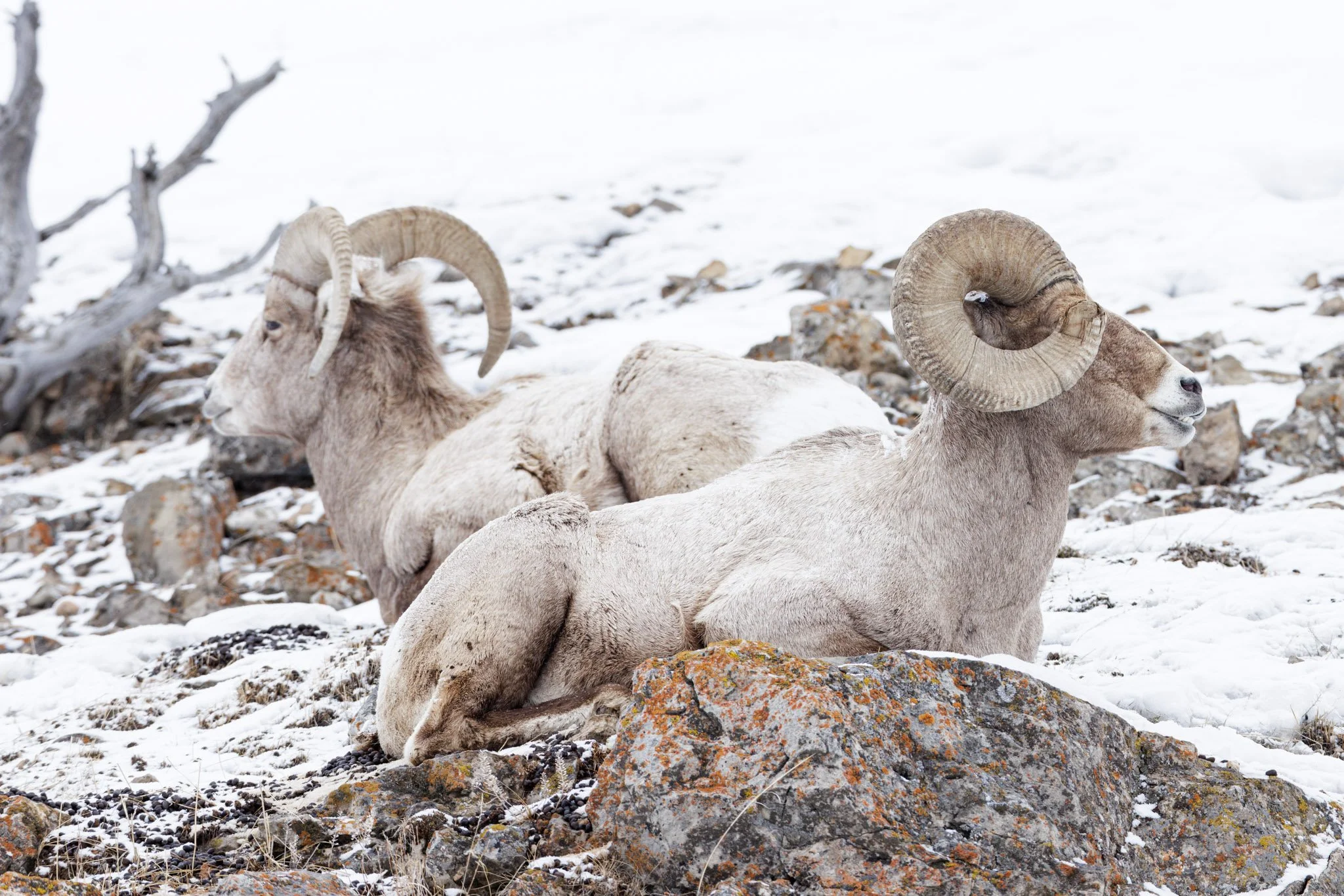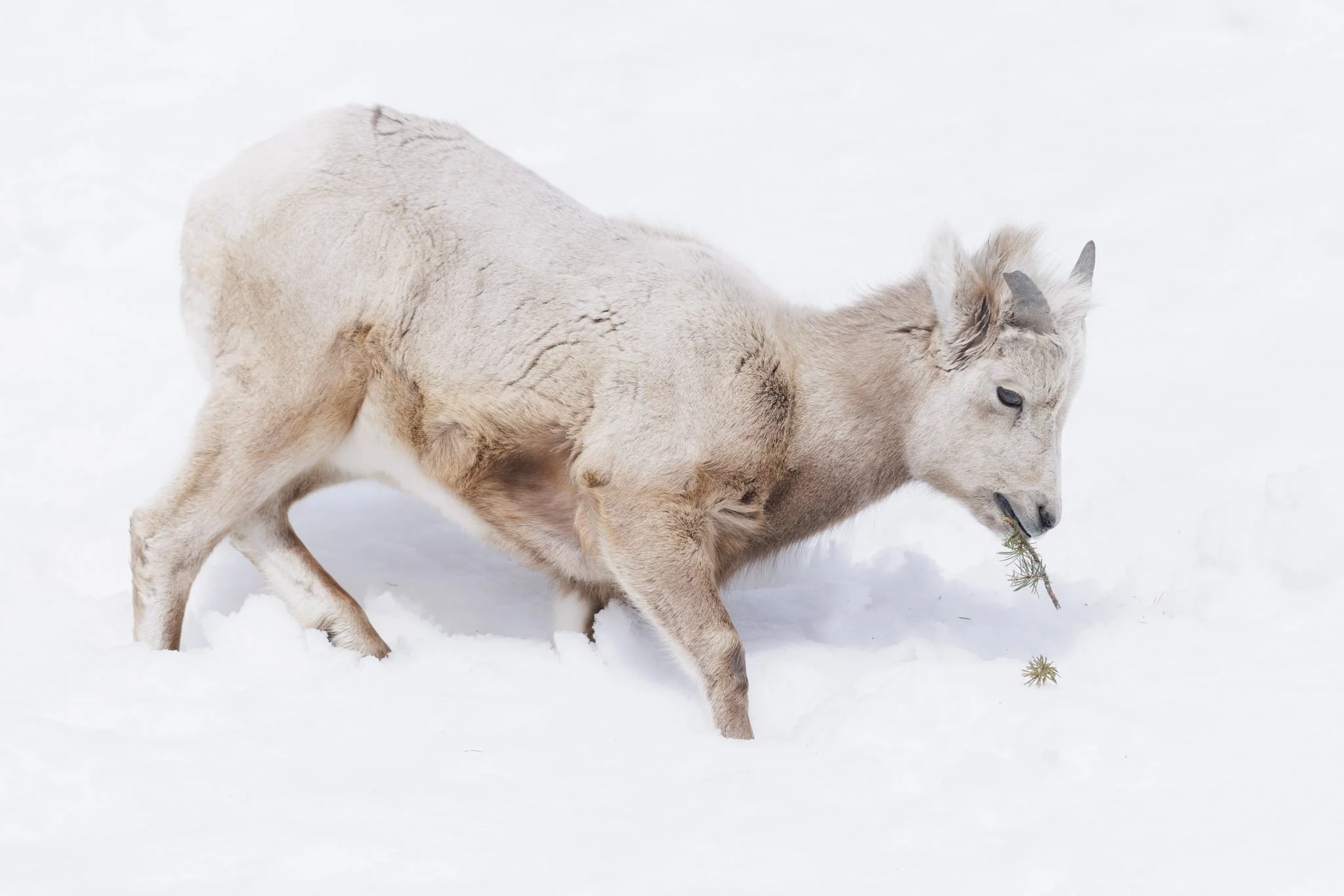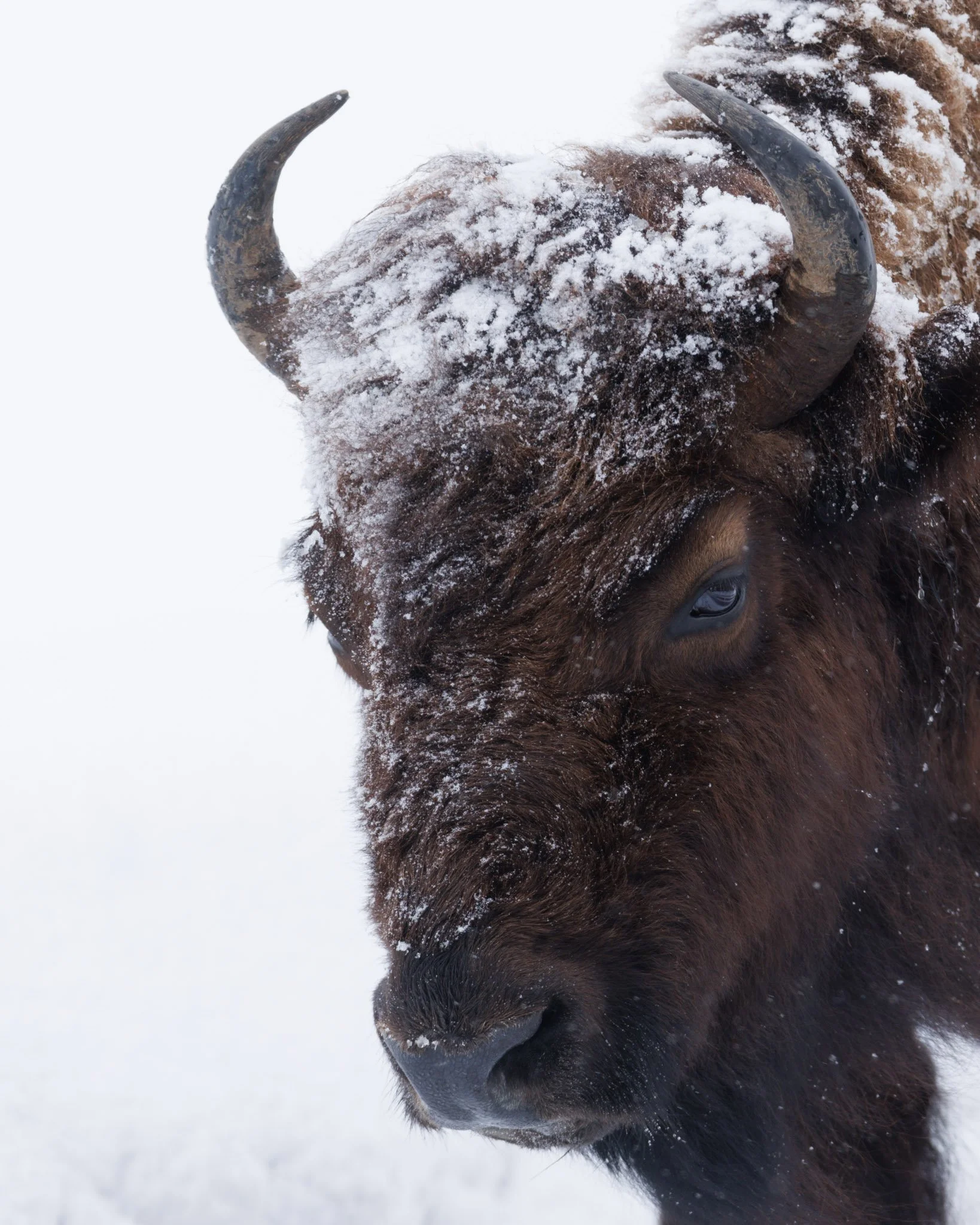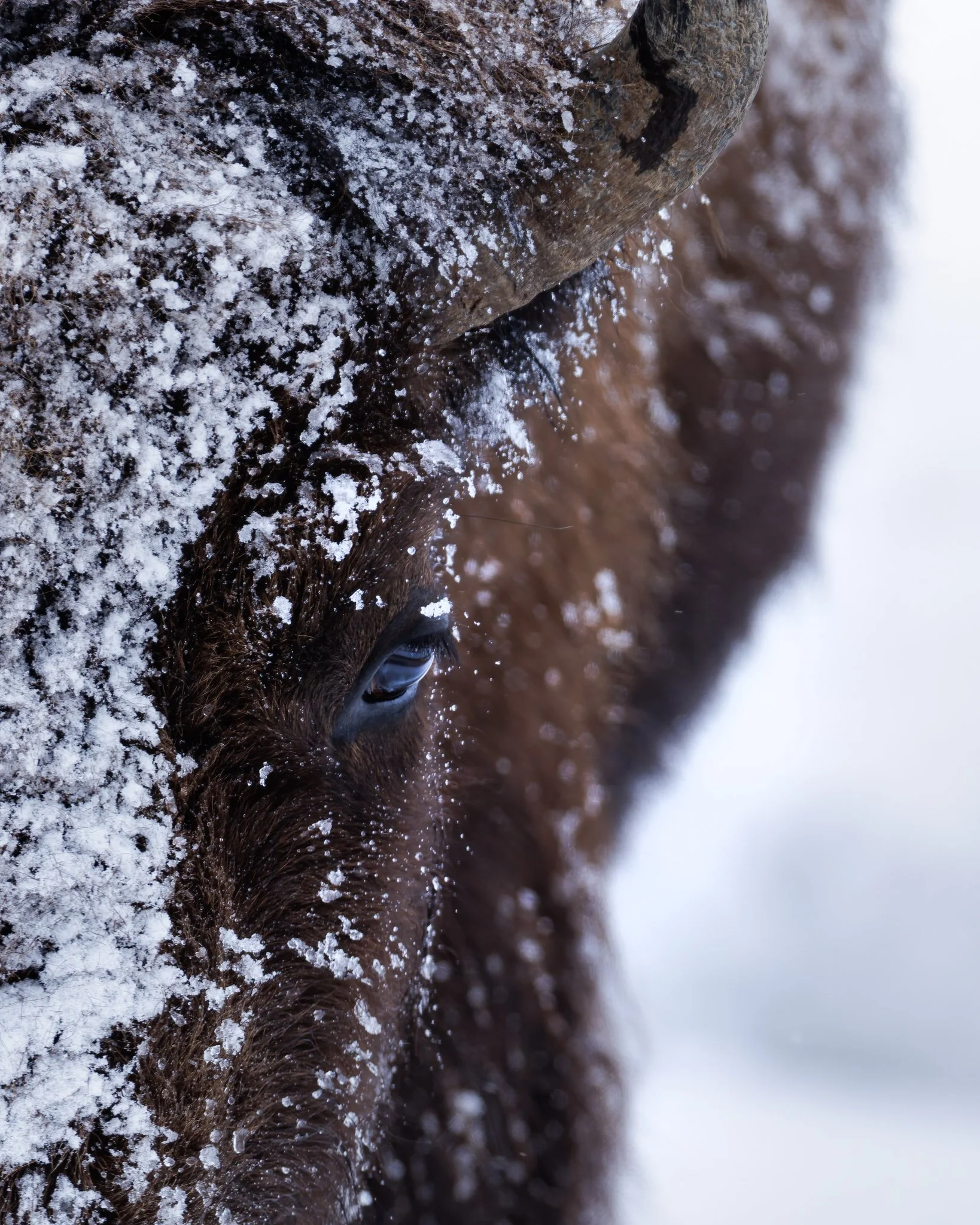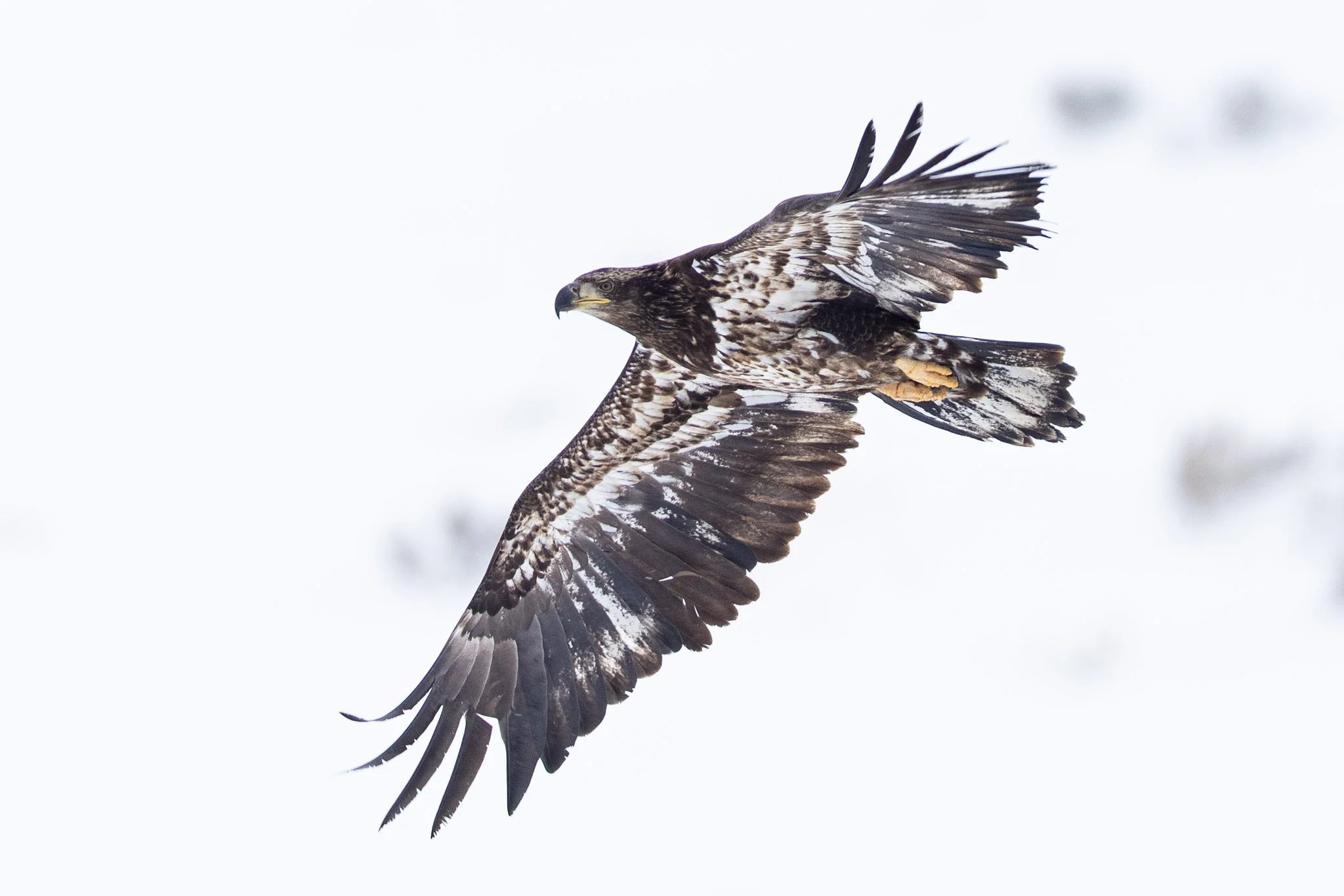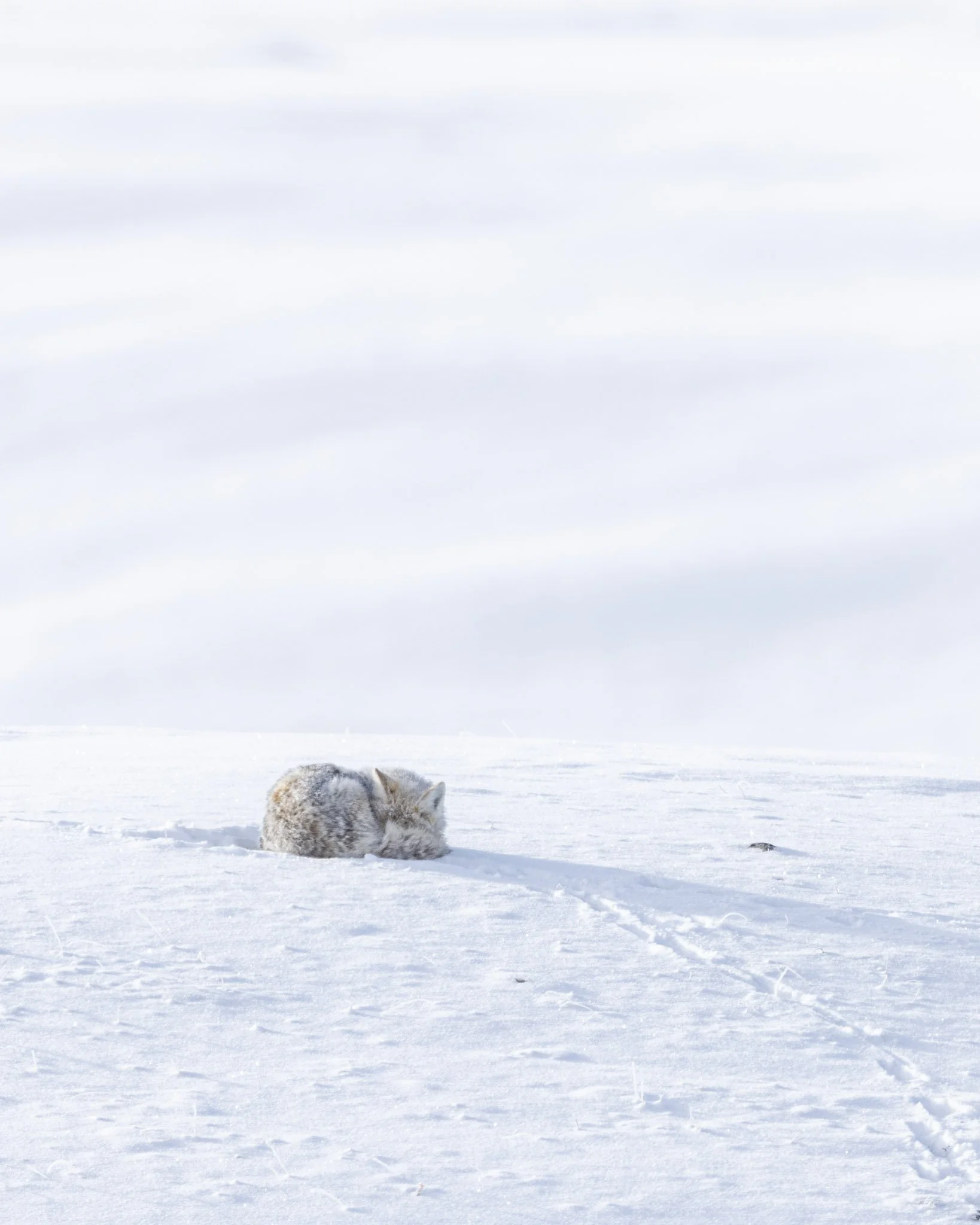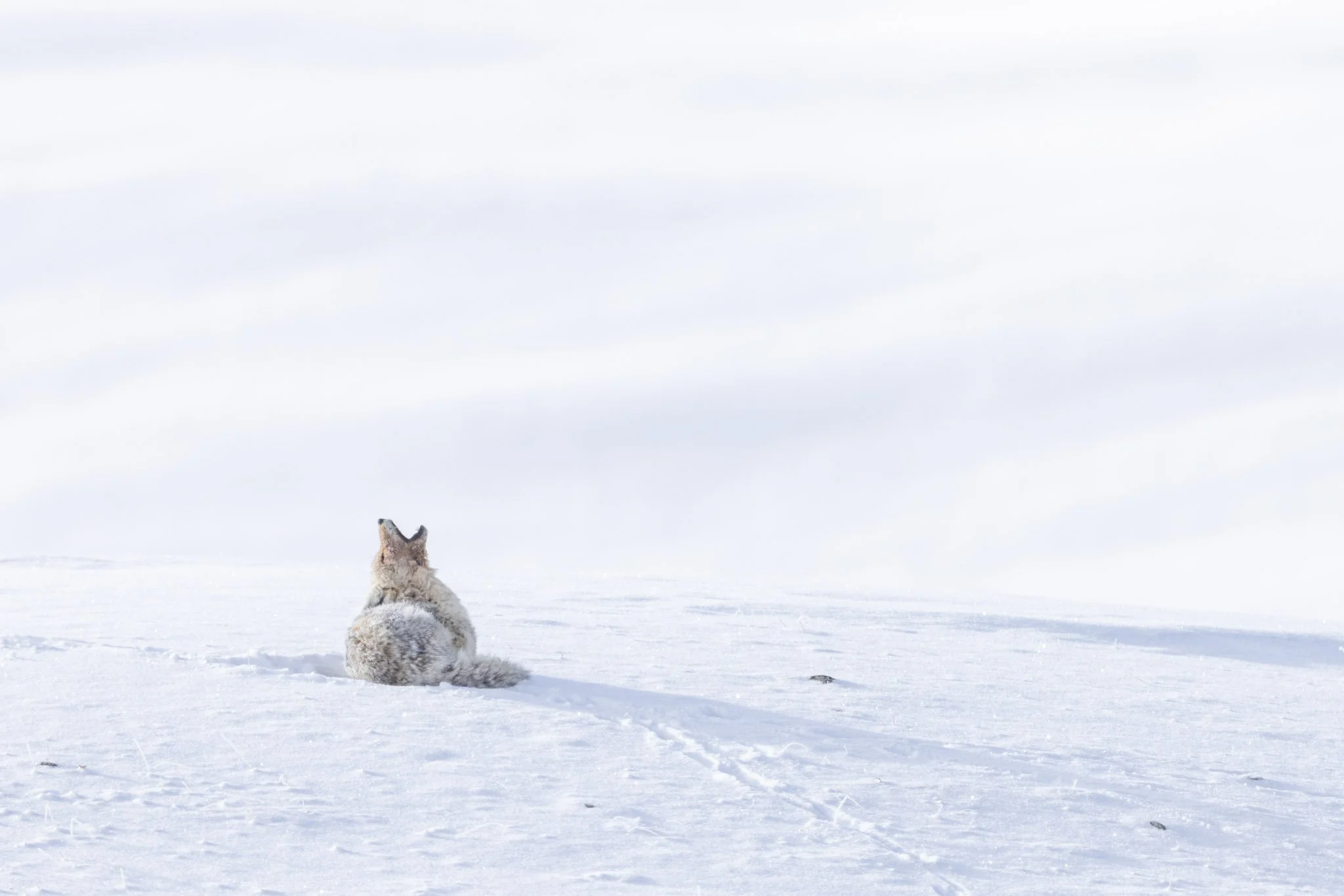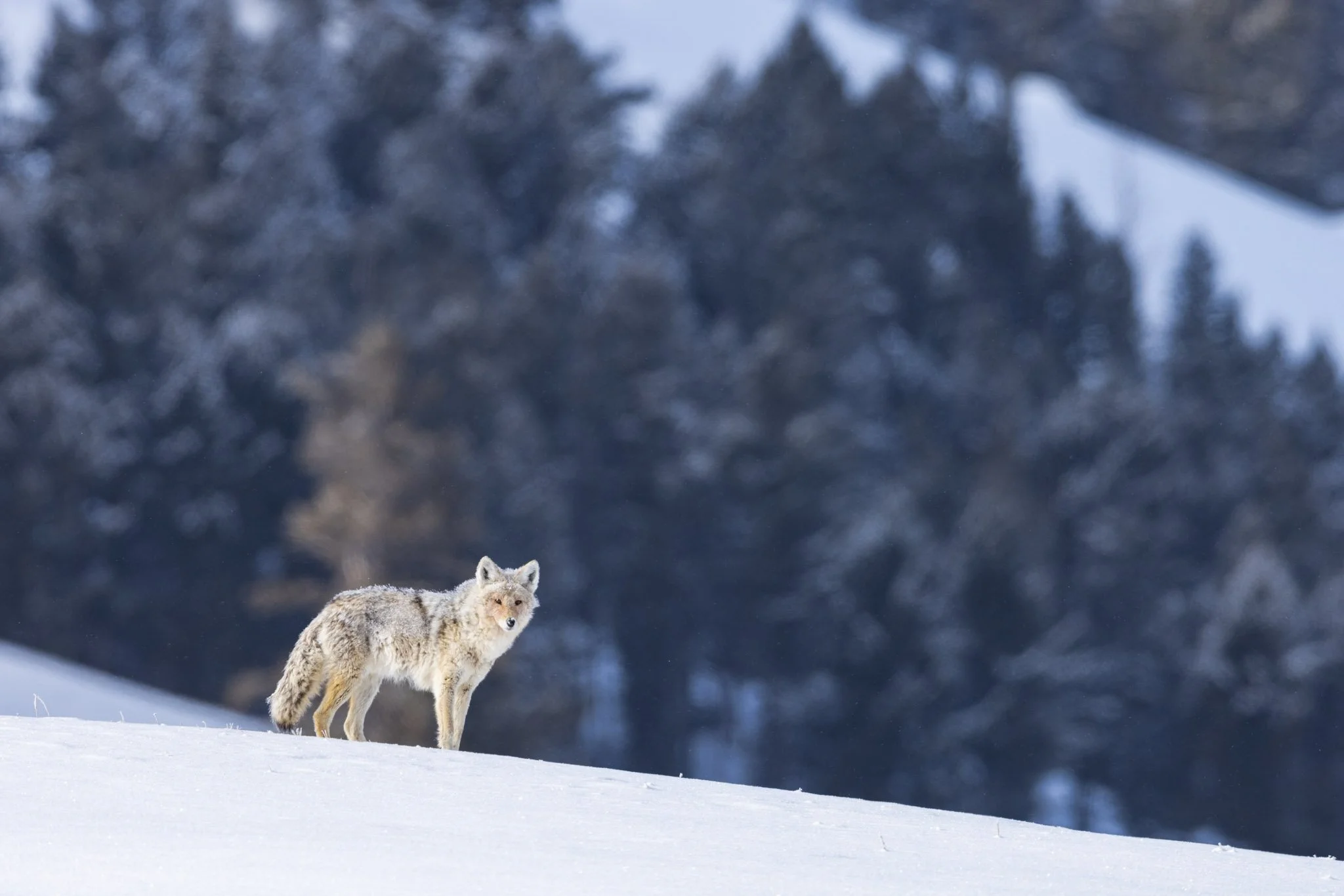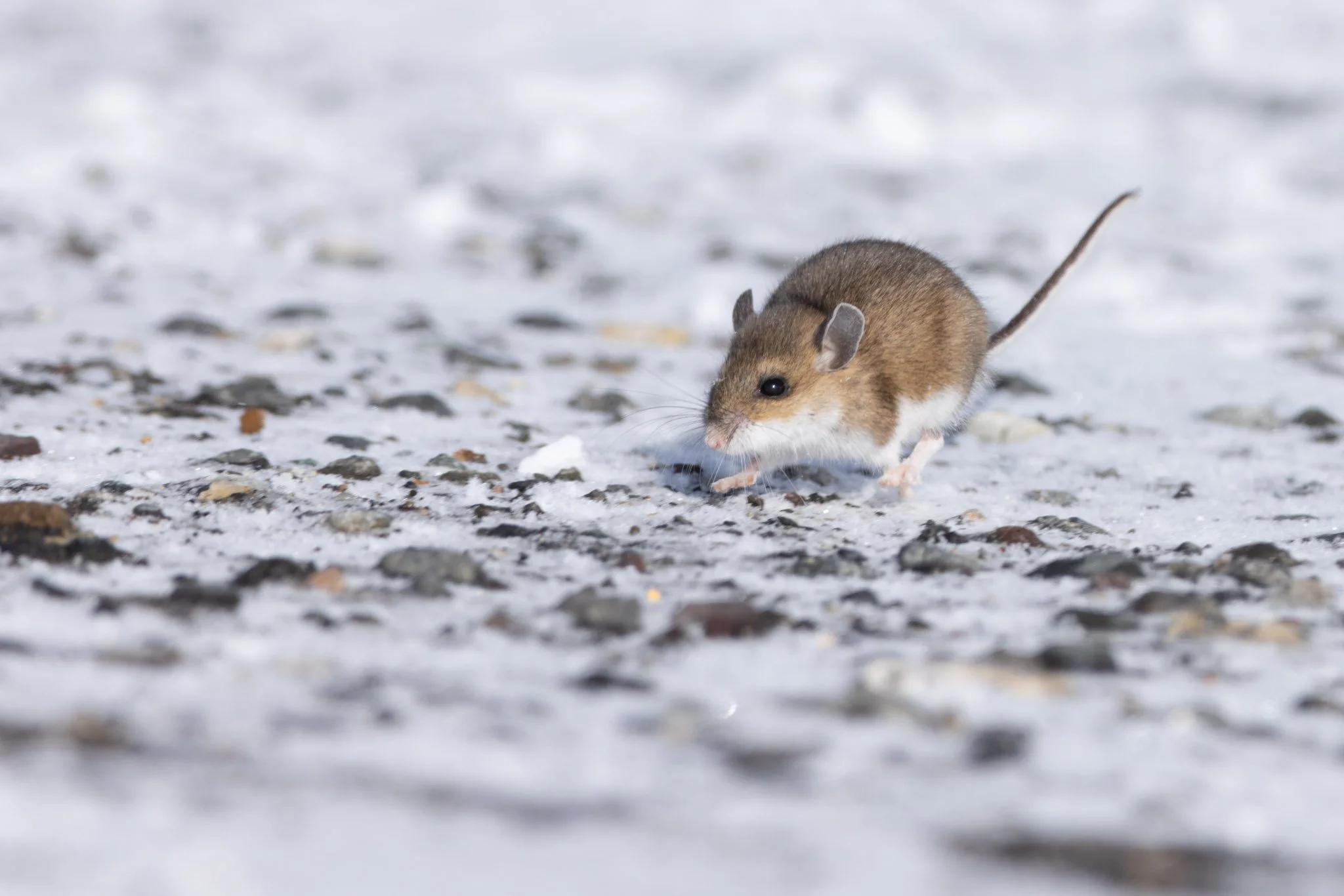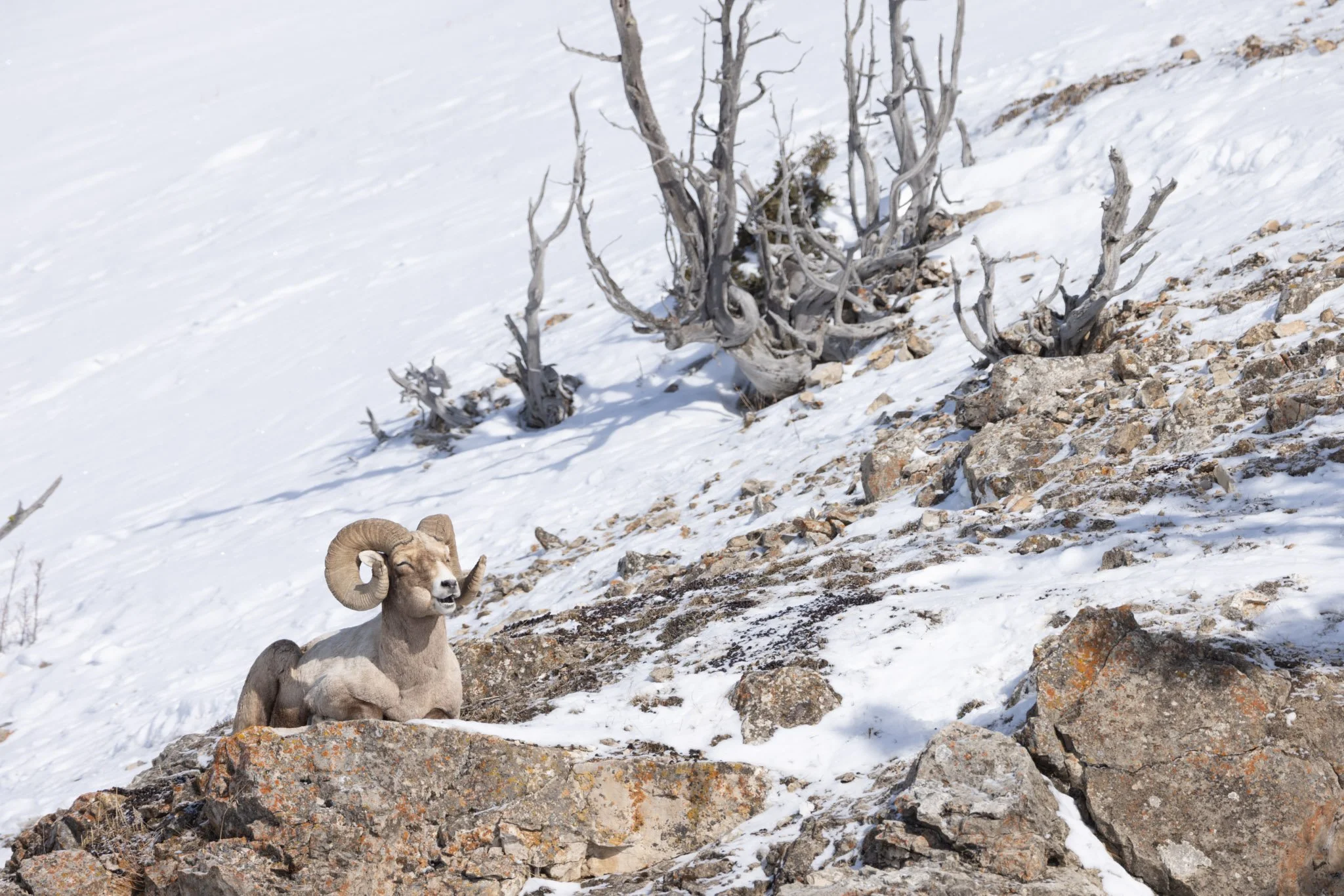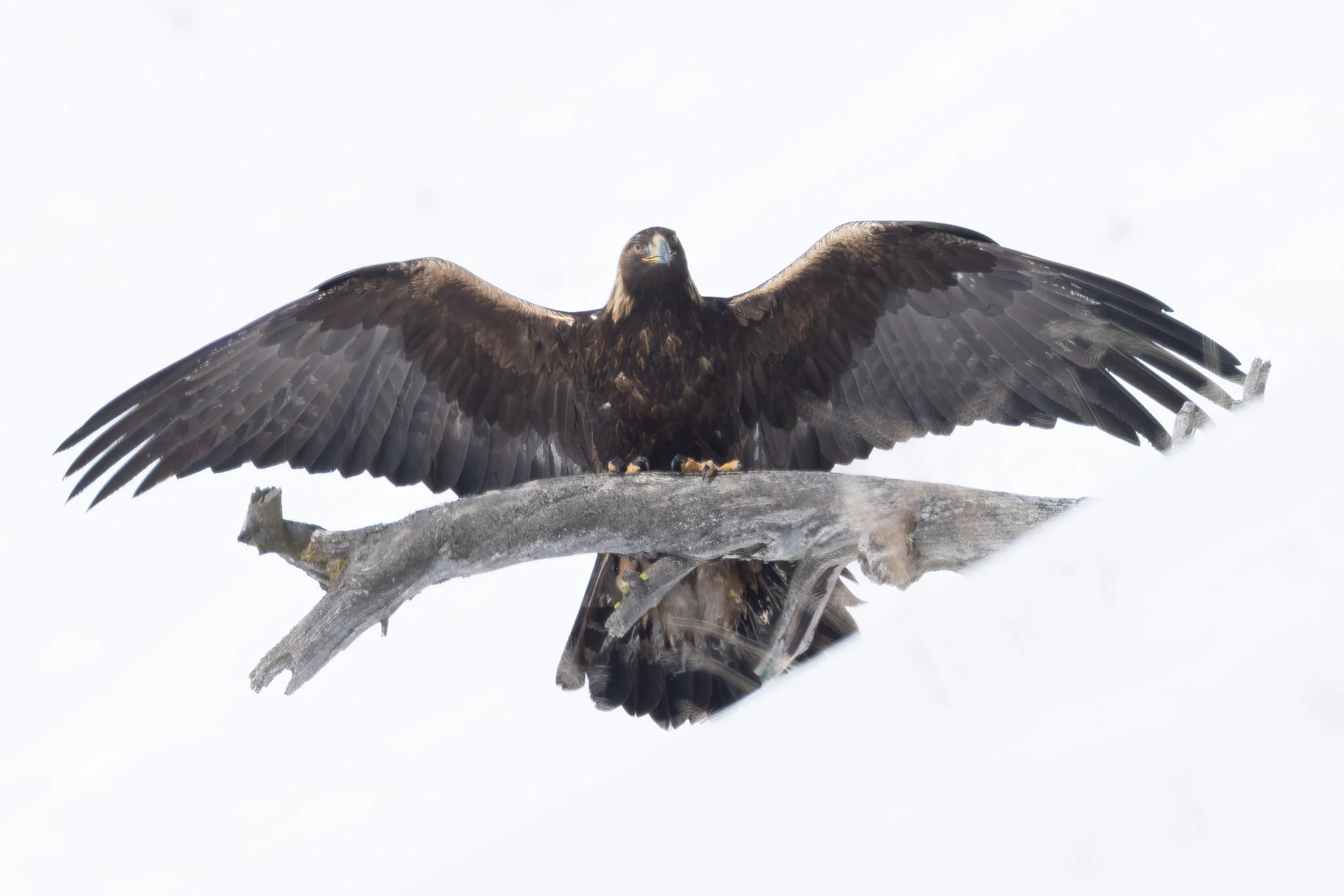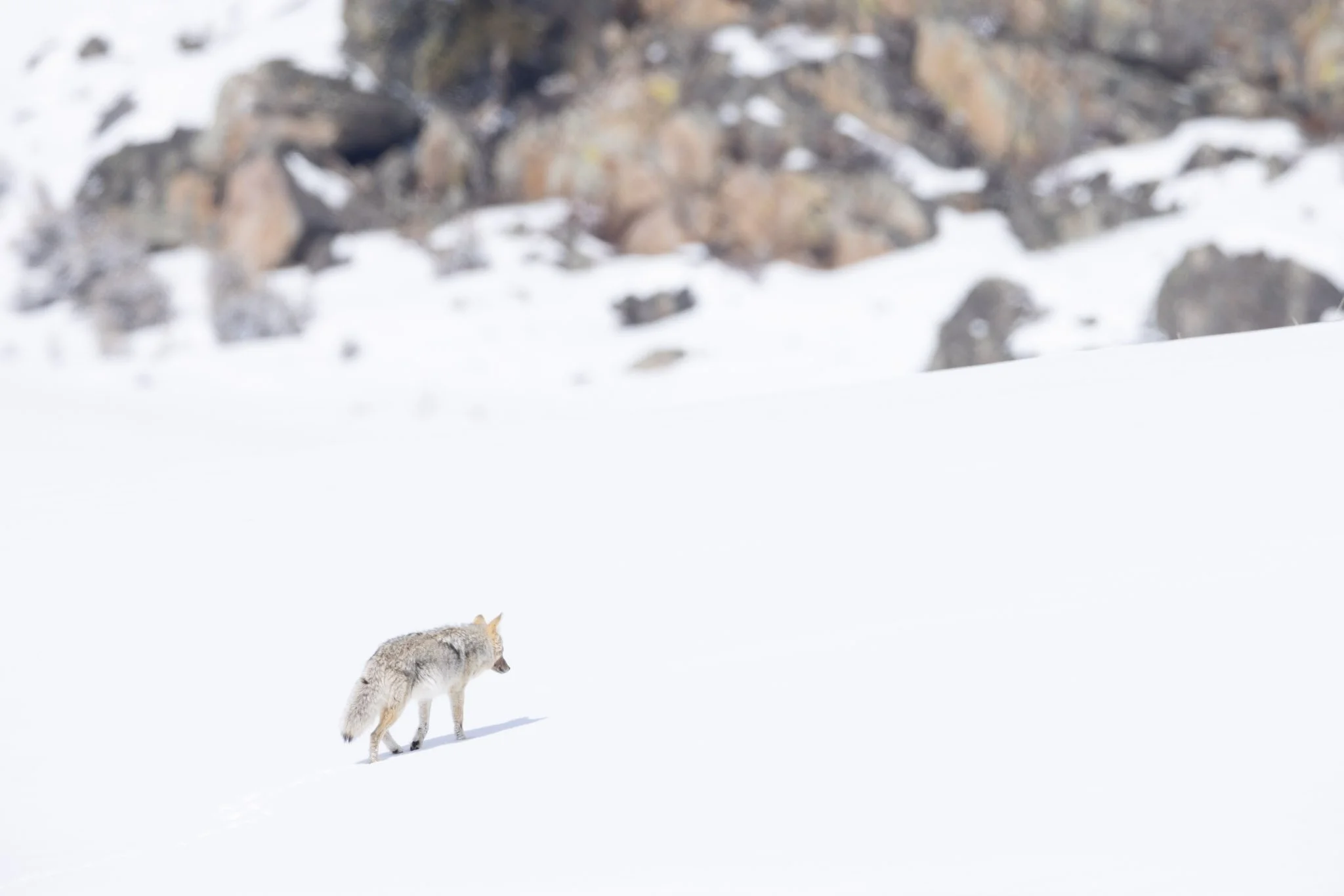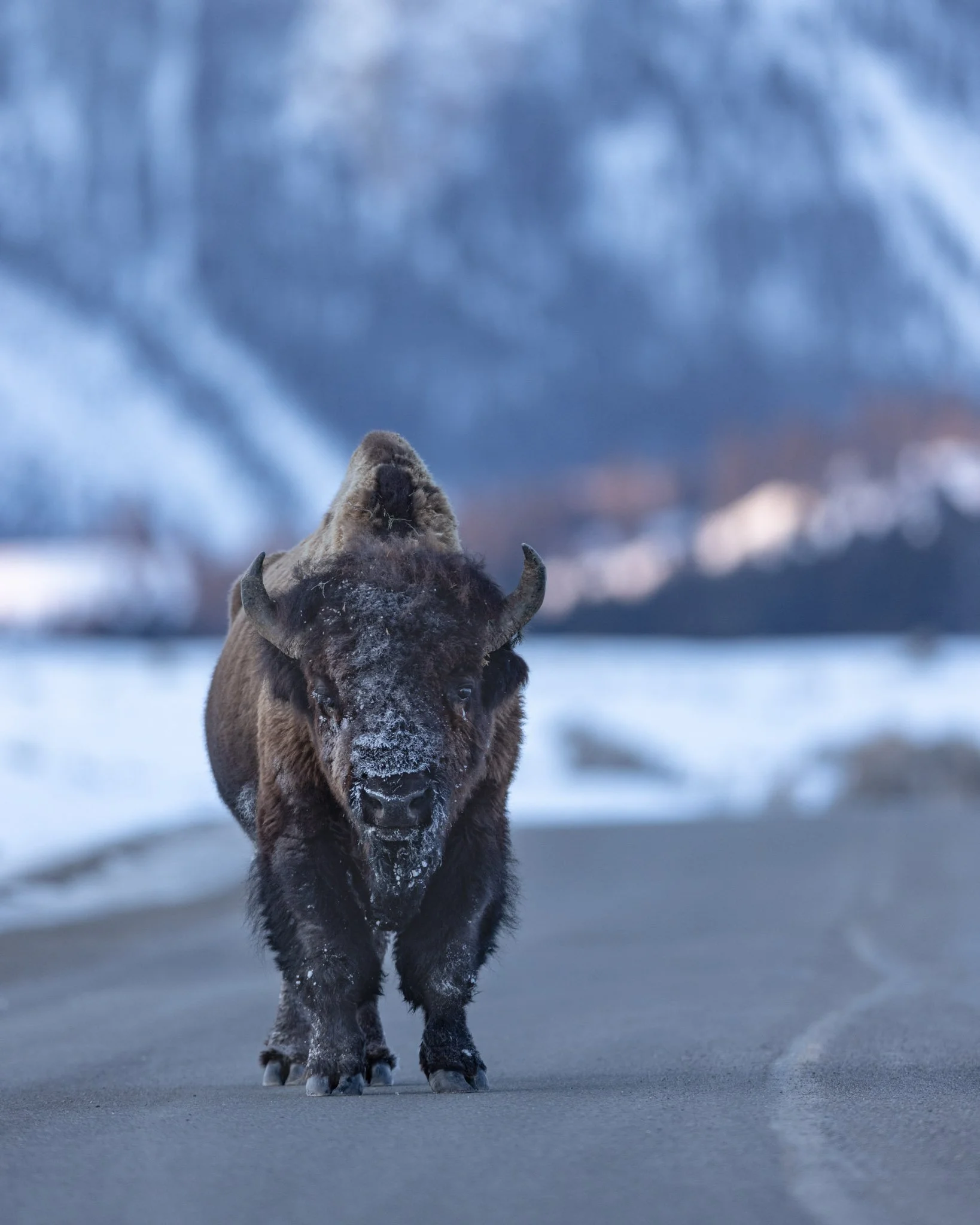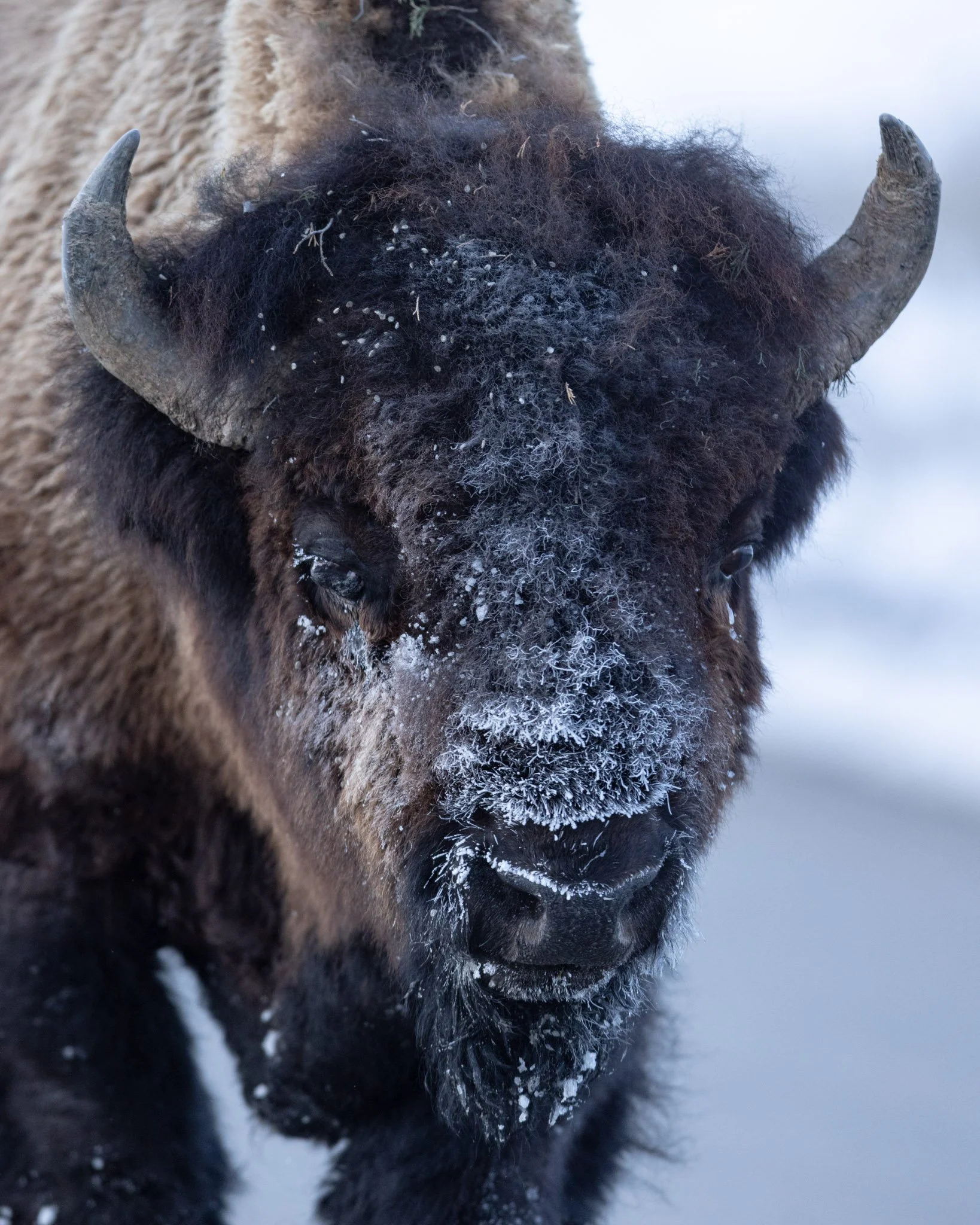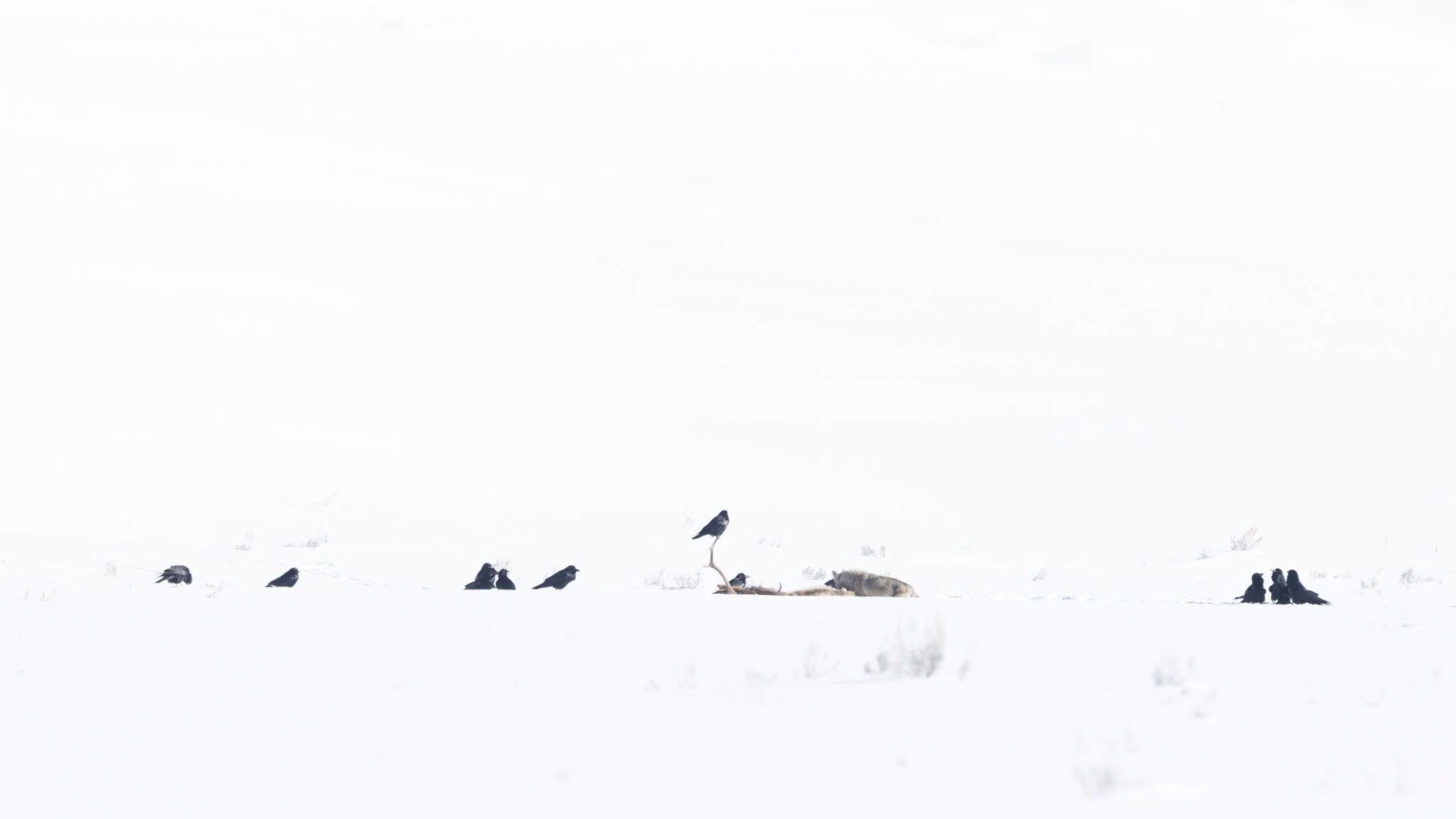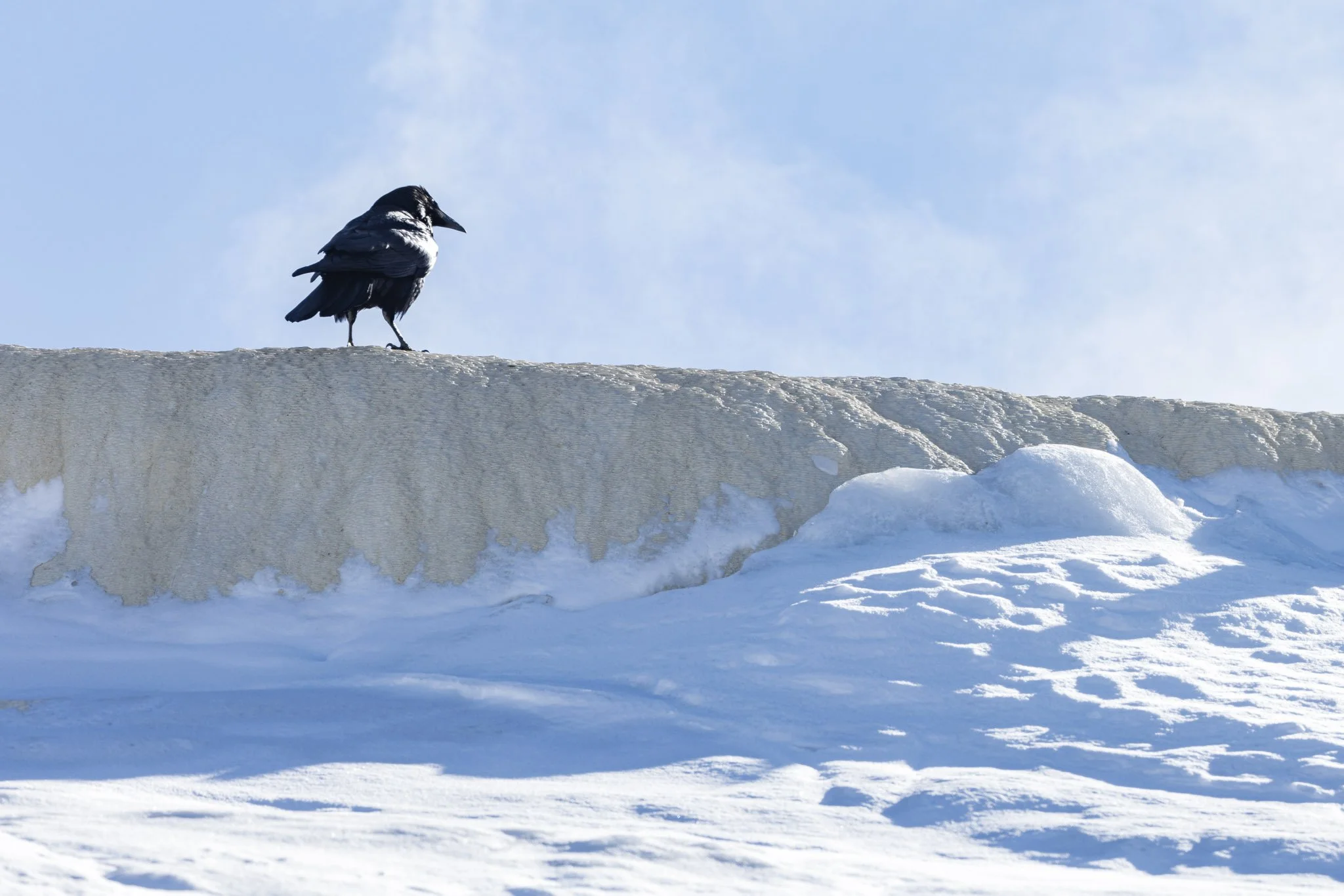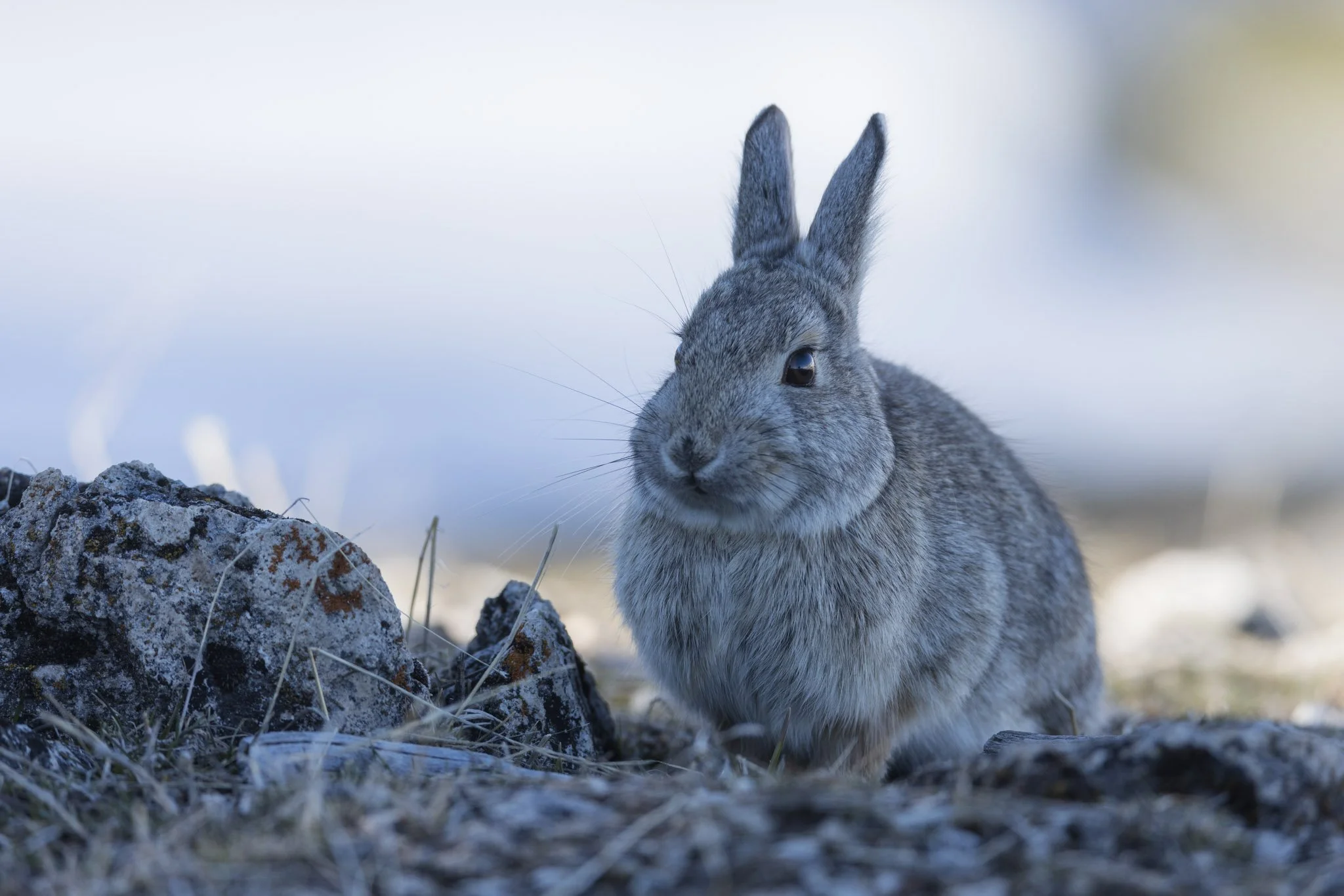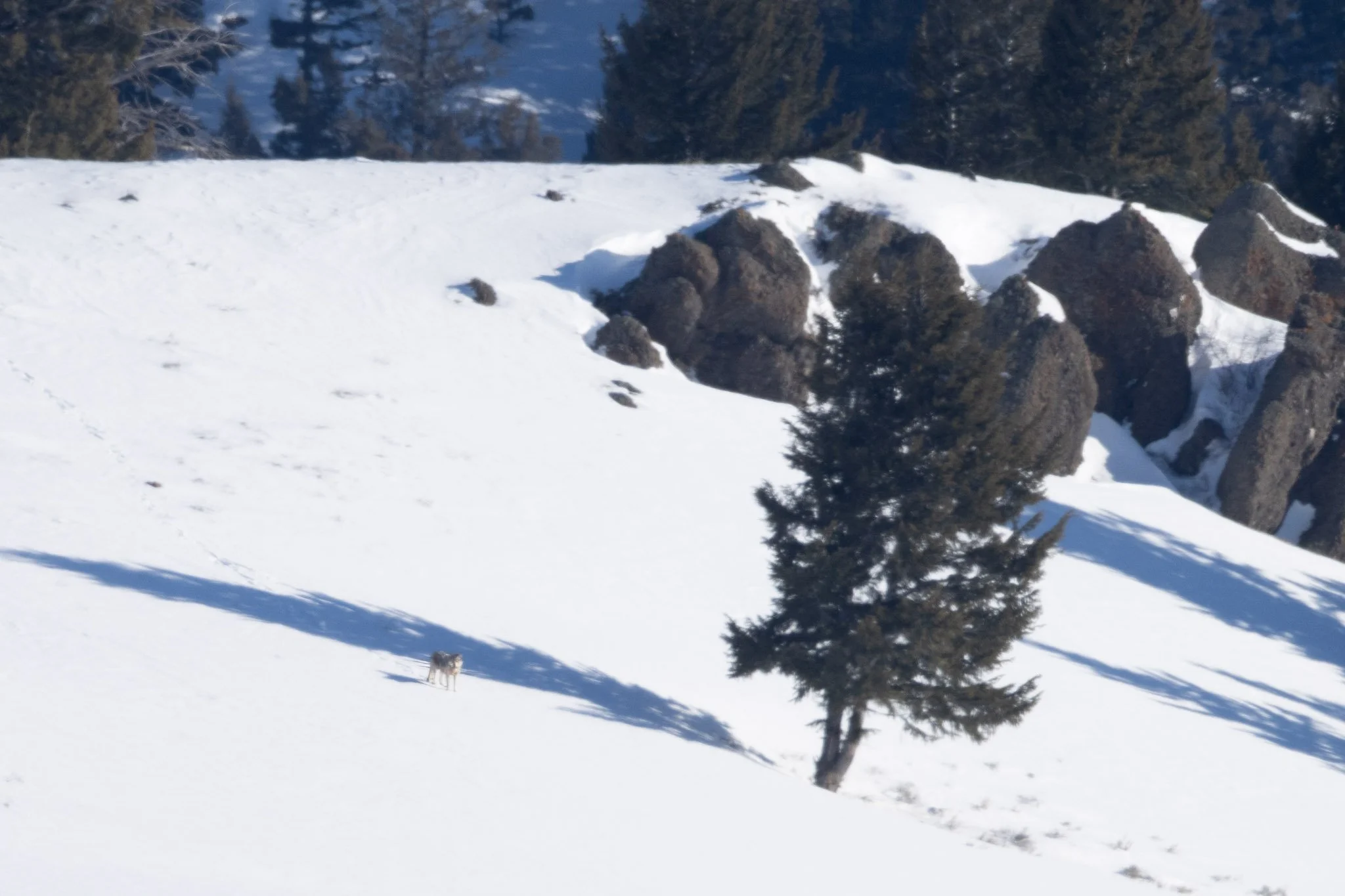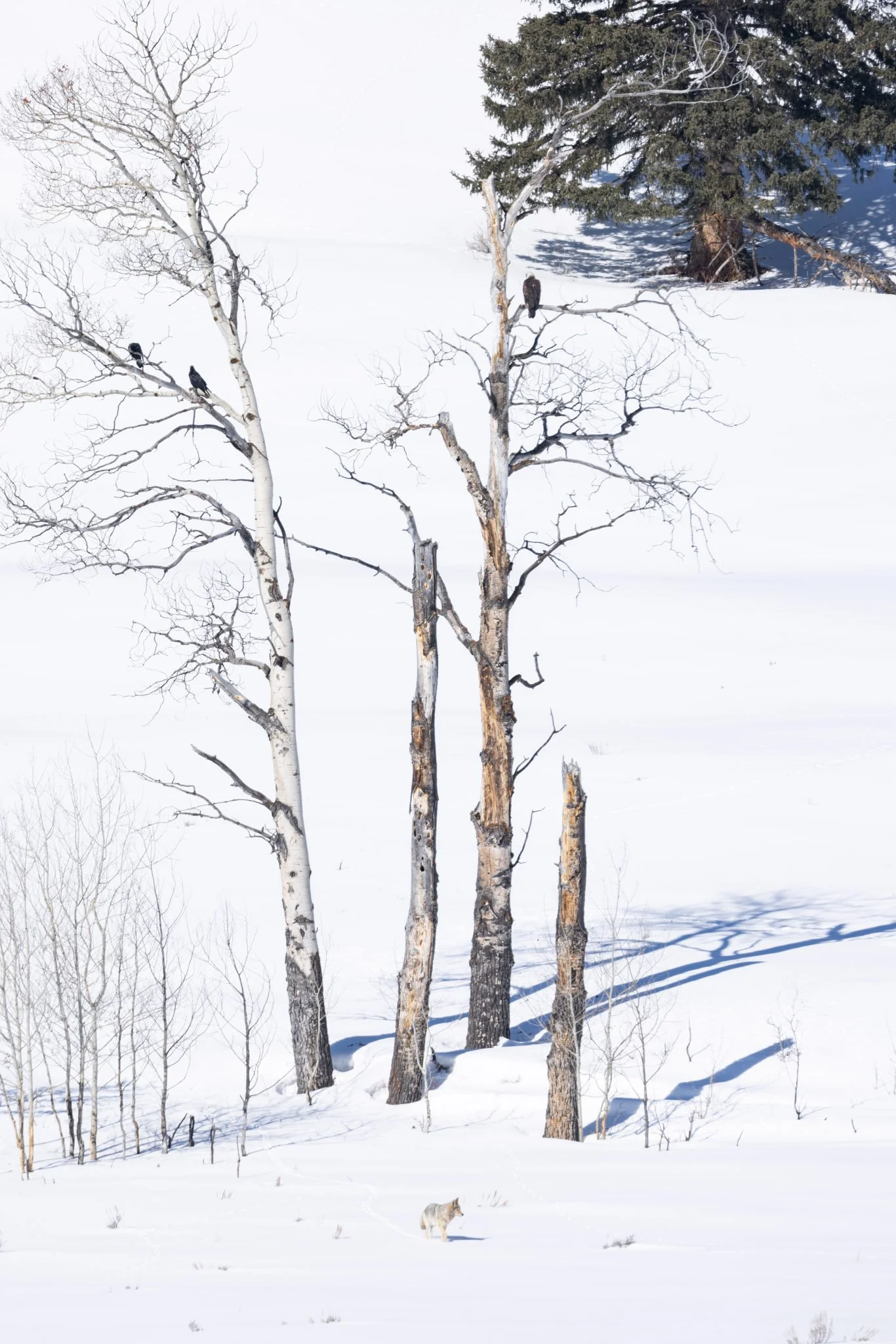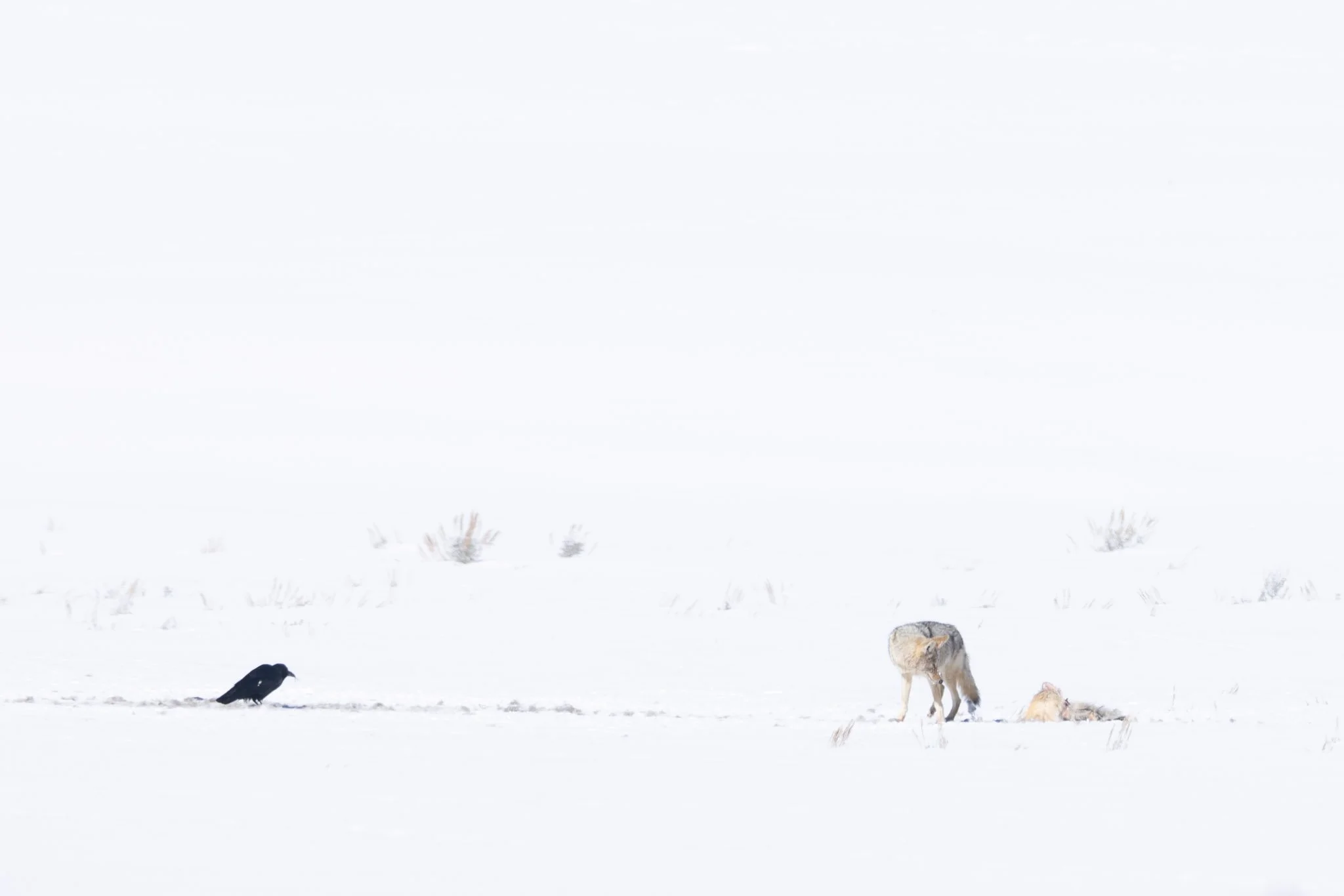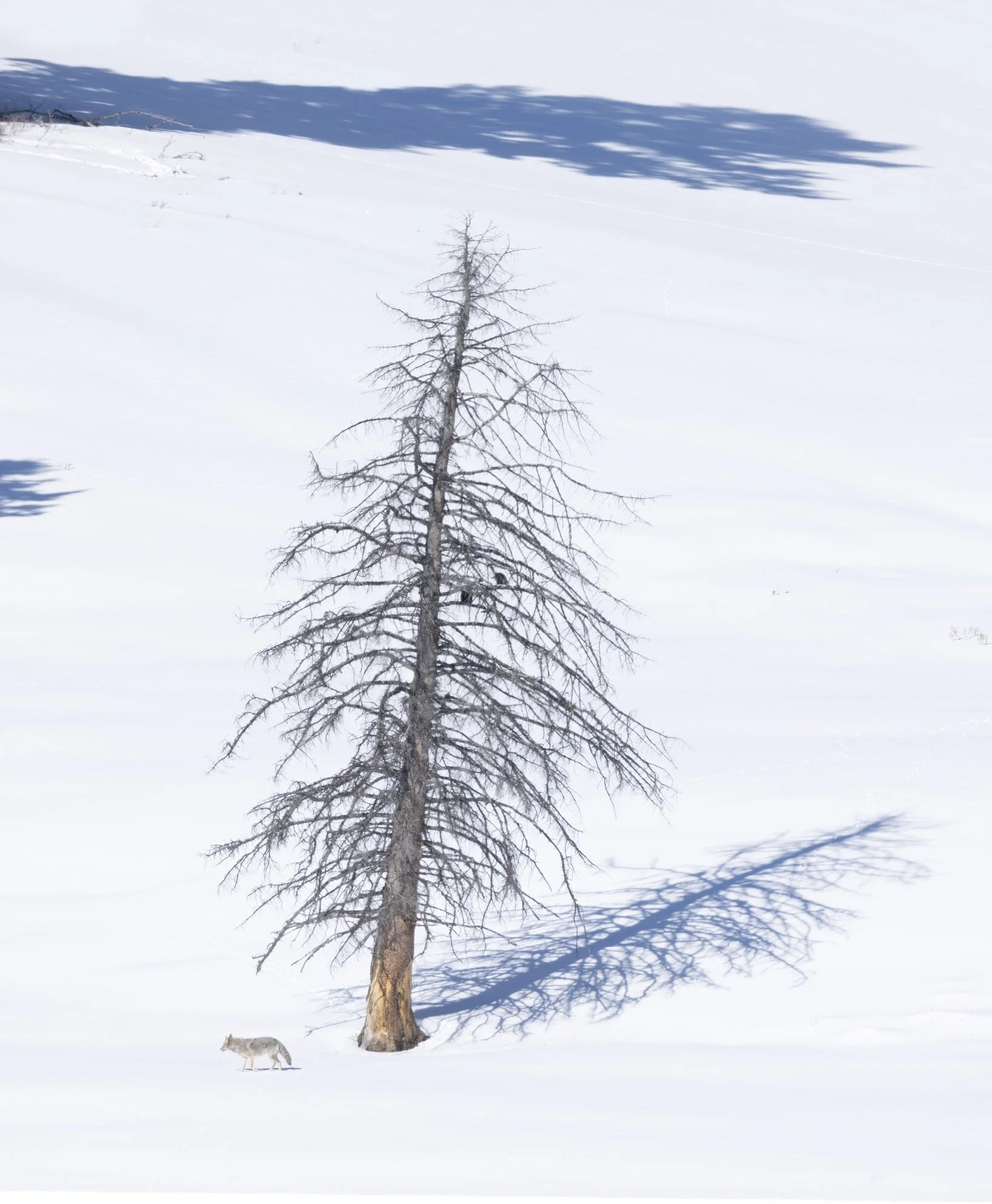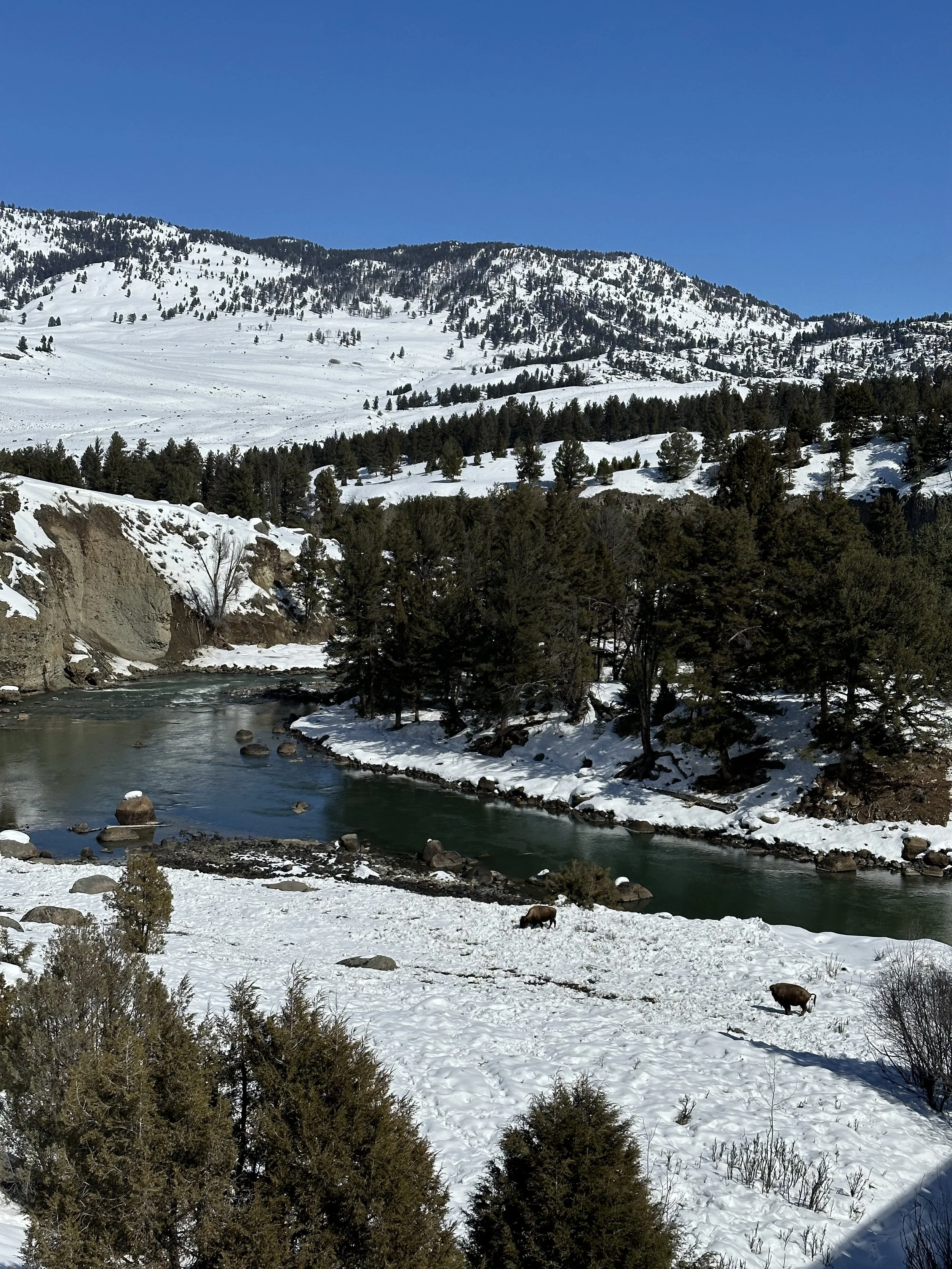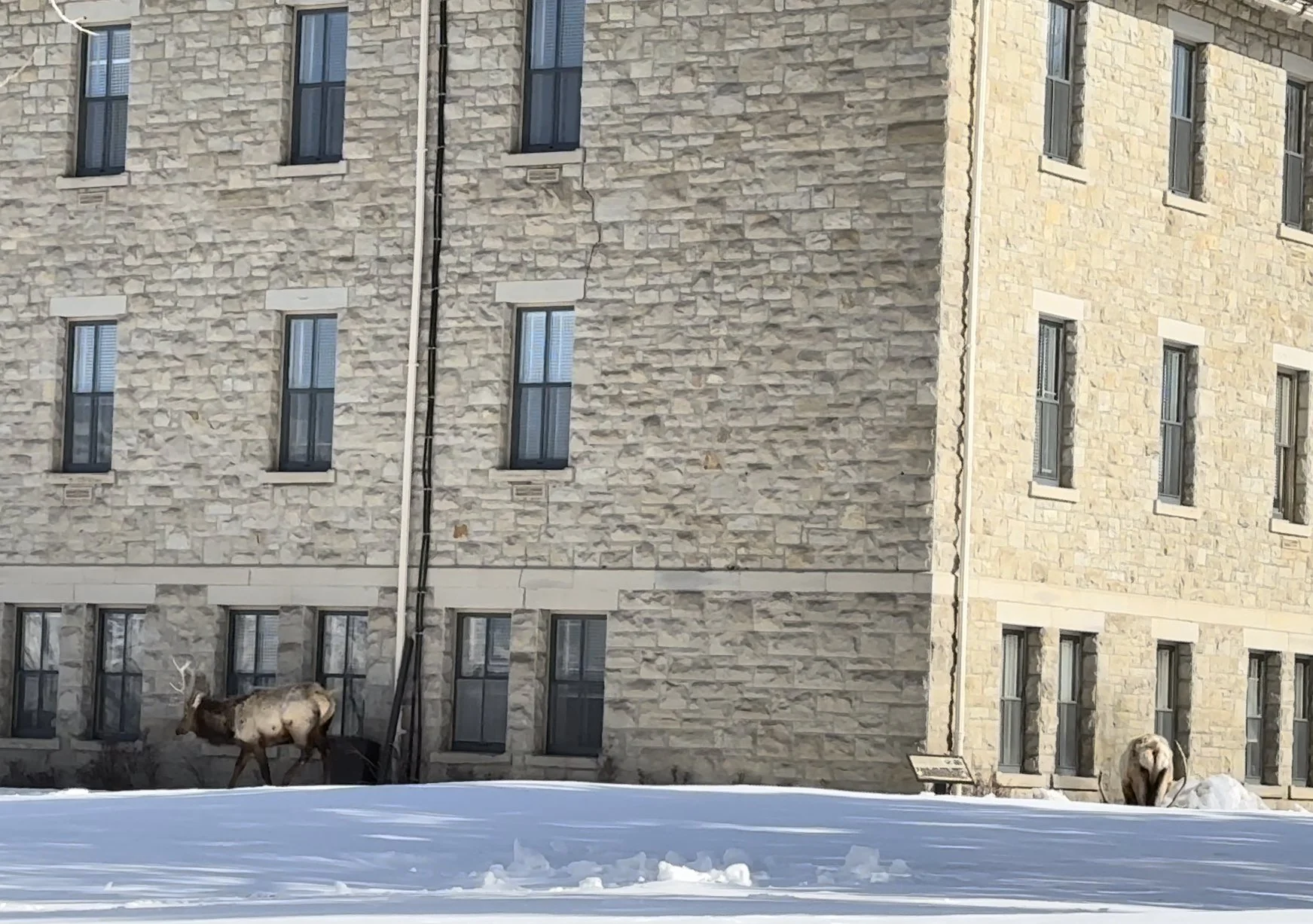Winter in Yellowstone Report: March 14-18, 2023
It’s been about three weeks since I was last in the northern range, but I’m back for two more weeks of winter photography workshops today. Winter hasn’t slowed down much at all since my last trip.
iPhone 14 Pro MaxMarch 14th
Snow was predicted for Tuesday and Wednesday, and although it was a bit on and off, it was heavy and very windy at times. It’s warm enough to deliver heavy, wet snow, and it’s not terribly fun standing out in it with the wind.
We were able to see a bit of everything in between pelting snow showers.
ISO 800 - f/8 - 1/640th (Canon R5 & 400mm f/2.8L IS II + 2x extender)A few bighorn sheep were hanging out near the confluence of the Lamar River and Soda Butte Creek. Only three rams were in this group, plus some young ones still hanging out separately with the females and babies.
Speaking of babies, which are nearly a year old now, this one appeared to enjoy pine needles.
ISO 100 - f/2.8 - 1/4,000th (Canon R5 & 400mm f/2.8L IS II)While watching sheep and hoping for otters across the road, I spotted this lone coyote sleeping in the snow. It can be difficult to distinguish between napping coyotes and rocks, but the latter gets up eventually!
ISO 400 - f/8 - 1/1,250th (Canon R5 & 400mm f/2.8L IS II + 2x extender)March 15th
Our first stop of the morning was to check out a previously used great horned owl’s nest in Mammoth. I used my thermal binoculars to get an idea of where she might be, then picked up the familiar pattern of feathers in between branches through my camera.
ISO 800 - f/8 - 1/500th (Canon R5 & 400mm f/2.8L IS II + 2x extender)The morning continued with frosty, snow-covered bison, as it often does in the winter before the sun gets a chance to melt it off. The temperature has to be just right for the snow to really pile up on them. Too warm and it might just melt. Too cold and the snow is probably too dry to stick and blows away.
ISO 640 - f/8 - 1/800th (Canon R5 & 400mm f/2.8L IS II + 2x extender)This herd was hanging out in the road on the west end of Phantom Lake before the snowplow came down the hill and spooked them in every direction.
I experimented with a more creative close-up crop for the below photo. Animal eye autofocus in newer mirrorless cameras makes getting the perfect focus a breeze, allowing you to concentrate more on the composition.
ISO 400 - f/8 - 1/800th (Canon R5 & 400mm f/2.8L IS II + 2x extender)Earlier that morning, we came across the carcass of what appeared to be a goose near the Blacktail Ponds. A golden eagle was feeding on it before flying off farther away from us.
We stopped to check the area again later in the afternoon to find this juvenile bald eagle feeding on what little was left after a couple of coyotes dragged the goose to the far side of the ponds. The eagle’s flight path went nearly over our heads, allowing for a much closer image than the morning.
ISO 800 - f/8 - 1/1,1600th (Canon R5 & 400mm f/2.8L IS II + 2x extender)March 16th
Heading through “Little America” (the area west of Slough Creek), we came across a car stopped in the road for quite a while. We couldn’t see what she was looking at but she eventually let us know a “wolf” was sleeping on the hill at the next pullout down the road. We found the “wolf” sleeping away in the snow. It’s a pretty common mistake since our coyotes have a very full coat in the winter.
ISO 400 - f/8 - 1/800th (Canon R5 & 400mm f/2.8L IS II + 2x extender)A little bit of stirring in what looked like a comfy place for a nap led to some exuberant howling. I’ve tried many times to get the perfect howl on video, but it’s difficult to get the right distance with no other sounds nearby.
ISO 400 - f/8 - 1/800th (Canon R5 & 400mm f/2.8L IS II + 2x extender)He eventually got up with some stretching before walking towards the road and into a great background and great light. Check out the video below and subscribe to my channel on YouTube. I’d like to work on my channel there in the near future.
ISO 400 - f/8 - 1/800th (Canon R5 & 400mm f/2.8L IS II + 2x extender)While watching the bighorn sheep, this little mouse started running around the pullout and doing circles around the cars and people. Definitely a first for me!
ISO 320 - f/8 - 1/1,600thA few bighorn rams continued to make their daily appearance up on the cliffs above Soda Butte Creek. This one was caught napping.
ISO 320 - f/8 - 1/1,600th (Canon R5 & 400mm f/2.8L IS II + 2x extender)A nearby carcass of a bull elk attracted this golden eagle. She made a landing right across the road from where we were standing. There is often a pair hanging out here often, and the female is tagged with a tracking antenna.
ISO 200 - f/8 - 1/1,000th (Canon R5 & 400mm f/2.8L IS II + 2x extender)Another coyote showed up in the road on our way back through Little America, this time stopping right in the snowbank on the side of the road for some barking and howling. Unfortunately, we couldn’t stop in the road right there to capture it. We moved up to the next pullout to see him heading over the hill and out of sight.
ISO 320 - f/8 - 1/1,600th (Canon R5 & 400mm f/2.8L IS II + 2x extender)March 17th
This morning started off with this incredible specimen of a bull bison walking the road just outside of Mammoth Hot Springs. We were able to get positioned in a pullout just in time, getting the distant mountains in the frame for a great blue background.
ISO 800 - f/2.8 - 1/800th (Canon R5 & 400mm f/2.8L IS II)As he got closer, we had to retreat back into the car for a few more shots. After a closer look, I noticed one of his eyes has something wrong with it.
ISO 800 - f/2.8 - 1/800th (Canon R5 & 400mm f/2.8L IS II)We continued heading east into the park, where we’d come across a group watching a carcass of a bull elk far out in the Soda Butte Valley. The newly named Shrimp Lake wolf pack fed early in the morning and offered an occasional glimpse up in the trees throughout the rest of the day. Coyotes, ravens, and eagles fed periodically over the next few days.
ISO 200 - f/8 - 1/400th (Canon R5 & 400mm f/2.8L IS II + 2x extender)Back in Mammoth, we walked the boardwalks in search of the first mountain bluebirds of the season. No luck yet, but this raven was perched high up on the terrace formations.
ISO 400 - f/8 - 1/640th (Canon R5 & 400mm f/2.8L IS II + 2x extender)Another reason to take a look around the hot springs in Mammoth is to find some of the park’s smaller mammals feeding on the green grass, such as this mountain cottontail. They are pretty difficult to find anywhere farther into the park. I’ve also seen jackrabbits and snowshoe hares feeding in the same areas where the snow stays mostly melted.
ISO 500 - f/5.6 - 1/800th (Canon R5 & 400mm f/2.8L IS II + 2x extender)March 18th
Our first stop this morning was in the area of the same carcass from the day before. We got lucky just a bit before that, stopping to find others watching one of the wolves from the Shrimp Lake pack. This was shot from about a mile away.
The Shrimp Lake pack gets its name from the small lake near Trout Lake. A new pack is formed when one splits off from an already established pack, finds a mate, and dens that spring. This pack consists of two adults and two pups from spring 2022.
ISO 200 - f/8 - 1/800th (Canon R5 & 400mm f/2.8L IS II + 2x extender)Down the road where the bull elk still remained, we found a coyote, ravens, and a bald eagle taking their turns with the meal.
ISO 160 - f/8 - 1/800th (Canon R5 & 400mm f/2.8L IS II + 2x extender)The day before, some watched as two of the coyotes feeding on the elk killed a red fox that tried to come to get a piece of the meal. It’s natural, but still unfortunate since this was the only fox I’ve seen other than the fed foxes of Cooke City this year.
ISO 160 - f/8 - 1/800th (Canon R5 & 400mm f/2.8L IS II + 2x extender)Even in the harsh sunlight in the middle of the day, you can get some cool images of the wildlife interacting with the shapes and shadows on the landscape.
ISO 160 - f/8 - 1/800th (Canon R5 & 400mm f/2.8L IS II + 2x extender)You might have noticed the last three images all have the same settings. Once the sun comes up, the light remains the same for several hours. If the light doesn’t change, neither should your settings, as long as you are still shooting in the sun. This is a quick tip to simplify your choice of settings.
These couple of bison were hanging out underneath the Yellowstone River Bridge, which is scheduled to be replaced over the next few years. A new bridge will be constructed nearby starting this summer.
iPhone 14 Pro Max
These two bull elk were hanging out near the buildings in Mammoth during the afternoon.
We had hoped to see the first grizzly bear of the season, but cold and snow prevailed this week. Much of the park is still covered in a good bit more snow and ice than normal for this time of the year.
I’m working on next week’s report now, so I’ll keep you posted when that one’s ready!
Interested in joining me for a photography workshop in Yellowstone? Check out www.workshops.trentsizemore.com for more info, including dates and pricing!

